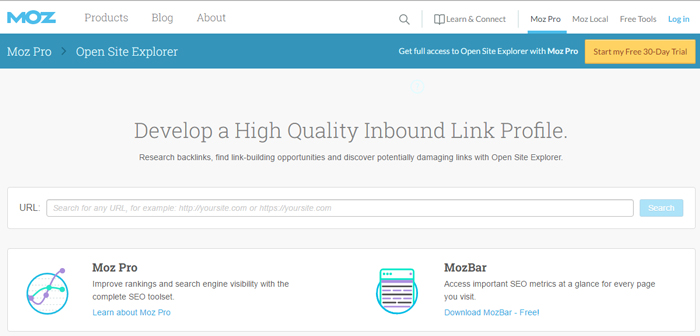SEO is a vast and complex field, with many common strategies employed by businesses worldwide. However, to truly distinguish your brand and gain a competitive edge, thinking outside the box is crucial. Simply following the crowd and employing standard SEO practices won’t cut it in the ever-evolving digital world. Instead, innovation, creativity, and a willingness to experiment will set your business apart.
That’s where unconventional SEO hacks come into play. These unique strategies, though less common, have the potential to drive significant growth in your online visibility and audience engagement. By leveraging these tactics, you can uncover new opportunities, tap into new audience segments, and drive exponential growth for your business.
Here are some unique and effective SEO hacks to drive your business growth.
1. Leverage Podcast Transcriptions
Podcasts are hugely popular, but their content is often overlooked in terms of SEO. By transcribing your podcasts, you can leverage this rich, conversational content to rank for a whole new set of keywords.
Tip: Post your podcast transcriptions on your website as a blog post or a standalone page (with the associated video). This way, the valuable content in your podcast becomes crawlable and can contribute to your SEO.
Example: If you run a podcast on entrepreneurship, transcribing your interviews with successful entrepreneurs and posting them on your website can help you rank for relevant keywords such as “entrepreneurship tips” or “startup success stories.”
2. Implement Emoji SEO
Yes, you read that right. As search engines evolve, they’re becoming more capable of understanding and indexing emojis. Users increasingly use emojis in search queries, and some brands effectively leverage this for a unique SEO boost.
Tip: Use emojis in your meta descriptions, headers, and content where appropriate. This SEO hack can help your content stand out and appeal to a younger, emoji-savvy audience.
Example: If you run a pizza restaurant, you could use the pizza emoji 🍕 in your meta description: “Enjoy the best 🍕 in town at our family-run restaurant.”
3. Exploit the Power of FAQ Pages
FAQ pages can be a goldmine for SEO. When crafted correctly, they address common queries about your business or industry, aligning perfectly with searchers’ intent, boosting your visibility for long-tail keywords and answer-box results in Google.
Tip: Make sure your FAQ questions and answers are detailed and feature your target keywords. It’s a natural way to incorporate long-tail keywords and improve your SEO.
Example: If your business sells skincare products, an FAQ question could be, “How does our Aloe Vera Moisturizer benefit dry skin?” The answer can then be informative and include key phrases related to aloe vera and dry skin care.
4. Optimize for Google Discover
Google Discover is a personalized content recommendation tool by Google. It presents a huge opportunity to drive traffic without users even doing a search. To optimize for it, focus on creating high-quality, engaging content that aligns with the interests of your target audience and encourages them to follow your website in Discover.
Tip: Create engaging, visually appealing content that can catch the attention of users on Google Discover. High-quality images and compelling headlines are key for this SEO hack to work.
Example: If you’re a travel blogger, a post titled “10 Breathtaking Hidden Gems in Italy” with stunning images could attract attention on Google Discover from users interested in travel.
5. Use AI for Content Optimization
AI tools can analyze top-ranking content and provide actionable recommendations to improve your content. They can suggest optimal keyword placement, readability improvements, and more.
Tip: Utilize AI SEO tools to analyze your content and get suggestions for keyword placement, semantic keywords, readability improvements, and other optimization strategies.
Example: If you’re writing a blog post about digital marketing trends, an AI tool can suggest related keywords to include, such as “social media marketing,” “content marketing,” and “SEO trends,” as well as advice on where to have these in your content for maximum impact.
6. Experiment with Augmented Reality (AR)
AR is the future, and Google has started indexing AR content. Create AR experiences related to your brand or products, and you could rank in an entirely new search result.
Tip: Use AR to give your customers an interactive and immersive experience. It could be a virtual tour, product demonstration, or an educational experience related to your brand.
Example: If you run a furniture store, create an AR feature that allows customers to virtually place your furniture in their home to see how it fits and looks before purchasing.
7. Translate Your Content
If you’re only producing content in English, you’re missing out on a massive global audience. Translating your content into other languages can help you tap into new markets and get a significant SEO boost. Although Google can translate content, these translations might not always be effective.
Tip: Use professional translation services or tools to translate your content into other languages. Be mindful of cultural nuances and colloquialisms to ensure the translated content makes sense to native speakers.
Example: If your blog posts about digital marketing tips are gaining traction, consider translating them into Spanish, French, German, etc., to reach a wider global audience.
8. Create Interactive Content
Interactive content, like quizzes, calculators, and infographics, can drastically increase user engagement, leading to longer time on your website and potentially more backlinks. It’s a less-used SEO hack that could give you a significant edge.
Tip: Use tools and platforms to create engaging quizzes, calculators, or interactive infographics relevant to your audience, which not only improves user engagement but also increases the chance of your content being shared.
Example: If you run a personal finance blog, you could create an interactive calculator that helps users calculate their potential savings or a quiz that tests their knowledge about investment strategies.
9. Voice Messages for Engagement
Audio messages on websites can keep users engaged for longer durations. It can be a unique way of delivering information, thus decreasing the bounce rate and boosting your SEO.
Tip: Consider implementing a feature on your website where users can listen to your content, which can be particularly useful for long-form content and can help to reduce bounce rate.
Example: If you have an in-depth guide on “how to grow organic vegetables,” providing an audio version can help users who prefer to listen rather than read.
10. Optimize for Featured Snippets
Featured snippets occupy the coveted ‘position zero’ on Google’s search results. Create clear, concise answers to commonly asked questions in your content to increase your chances of appearing in this prime spot.
Tip: Identify common questions related to your content, and answer them concisely within your content. Use headers to signal to Google the question you’re answering.
Example: If you have a blog post about baking bread, you could include a section with the header “How long should you knead dough?” and a succinct, clear answer underneath, which could potentially be featured in Google’s answer box for the related query.
11. Create AMP (Accelerated Mobile Pages)
AMPs load faster and provide a smoother experience for mobile users. Considering Google’s mobile-first indexing, AMPs can offer a significant SEO boost, which will also help to reduce the bounce rate significantly.
Tip: Convert your main pages into AMPs using an AMP plugin or manual coding. Remember to maintain your brand’s look and feel while optimizing for speed and user experience.
Example: If you run a news blog, consider converting your top-performing articles into AMPs to provide a faster reading experience for your mobile users.
12. Leverage E-E-A-T Principles
Google’s E-E-A-T (Experience, Expertise, Authoritativeness, Trustworthiness) guidelines are increasingly important for SEO. Showcase your expertise and credibility through author bios, testimonials, and quality content.
Tip: Establish credibility by highlighting your credentials, showcasing customer testimonials, and producing in-depth, fact-checked content. Include author bios with qualifications for content creators.
Example: If you have a health blog, include the credentials of your medical writers in their bio, cite reputable sources in your articles, and display patient testimonials to boost trustworthiness.
13. Use LSI (Latent Semantic Indexing) Keywords
LSI keywords are terms related to your main keyword. Including these in your content can help Google understand the context of your content better and can improve your rankings.
Tip: Use SEO tools to find LSI keywords related to your primary keyword and incorporate them naturally into your content, which helps search engines understand the context and relevance of your content.
Example: If your main keyword is “vegan recipes,” LSI keywords could be “plant-based diet,” “animal-free ingredients,” or “vegan cooking tips.”
14. Go Beyond Google
Don’t limit your SEO efforts to Google. Optimize for other search engines like Bing and DuckDuckGo to tap into a broader audience with this SEO hack.
Tip:Ensure your website follows the SEO guidelines of other search engines like Bing and DuckDuckGo, including submitting your sitemap directly to these search engines or optimizing for their unique ranking factors.
Example: Bing places a lot of emphasis on social media integration, so ensuring your content is sharable on social media sites could help your rankings on Bing.
15. Use Heatmaps
Heatmaps show where users are clicking and scrolling on your site. This data can help you improve site layout, placement of CTAs, and overall user experience, thus boosting your SEO.
Tip: Use heatmap tools to understand user behavior on your website. Use this data to optimize the placement of your most important information and CTAs.
Example: If you notice users tend to abandon your page before scrolling to your CTA at the bottom, consider moving it higher up on the page.
16. Optimize for ‘People Also Ask’ Boxes
When you search for a query on Google, you often see a ‘People also ask’ box. By answering these related questions in your content, you can improve your chances of ranking for them.
Tip: Identify common questions in the ‘People also ask’ section related to your content and provide clear, concise answers to these questions in your content.
Example: If you’re writing about “how to grow indoor plants,” answer related questions like “What are the best indoor plants?” or “How to take care of indoor plants?” in your content.
17. Use the Skyscraper Technique
Find a post that ranks well for your desired keyword, create an even better piece, and then reach out to those who linked to the original post to link to yours instead. Doing so allows you to rank #1 for difficult queries by reliably outperforming the competition.
Tip: First, identify a popular piece of content in your niche that’s ranking well. Then, design a superior version by adding more value, detail, and depth. Finally, reach out to people who have linked to the original content and ask them to link to your improved version instead.
Example: Suppose you’re in the gardening niche and find a high-ranking post titled “10 Tips for Growing Roses”. You can create a new post like “20 Comprehensive Tips for Growing Roses All Year Round”. Make sure your post is superior in content and detail. Then, reach out to those who linked to the original post, showing them your more comprehensive resource and requesting a link.
18. Explore YouTube SEO
YouTube is the second largest search engine. Creating and optimizing video content on YouTube can significantly increase your visibility.
Tip: Create quality video content related to your niche and optimize it with SEO best practices like keyword-rich descriptions, captions, and relevant tags.
Example: If you’re a fitness trainer, you can create workout videos and use keywords like “home workout,” “fitness training at home,” etc., in your video title, description, and tags. Make sure your video thumbnail is appealing to increase click-through rates.
19. Try Web Stories
Web Stories are a mobile-focused format that blends video, audio, images, animation, and text to create a dynamic consumption experience. This content can appear in Google Search results, Google Images, Discover, and the Google app, giving you more ways to reach your audience.
Tip: Web Stories are immersive, tappable experiences that can be shared and embedded across the web. Use this format to present your content in a more engaging and mobile-friendly way.
Example:If you run a travel blog, you can create a Web Story for “Top 10 Travel Destinations in 2023”, with each slide featuring a different destination, interesting facts, and stunning images.
20. Use Structured Data for Job Postings
If your website lists job postings, using JobPosting structured data can help your listing appear in a special user experience in Google Search results.
Tip: If your website lists job postings, using JobPosting structured data can help your listing appear in a unique user experience in Google Search results.
Example: When you post a job listing on your website, use structured data to provide specific details about the job, such as the salary range, location, and qualifications required. Google can then display this information directly in the search results.
21. Implement Breadcrumb Navigation
Breadcrumb navigation is a type of site architecture that can enhance user experience and is favored by search engines.
Tip: Breadcrumb navigation can improve the user experience by providing a clear path back to the home page. It also helps search engines understand the structure of your website.
Example: On an e-commerce website, a breadcrumb trail might look like this: “Home > Women’s Fashion > Dresses > Evening Dresses.” Each category is clickable, allowing users to easily navigate to higher-level categories.
22. Use the Broken Link Building Technique

Find broken links on other websites that are relevant to your content. Reach out to the website owner and suggest your content as a replacement for the broken link.
Tip: Find broken links on websites related to your niche. Reach out to the website owners and suggest relevant content to replace the broken link.
Example: If you have a fitness blog, find health-related websites with broken links. You can use SEO tools like Ahrefs or SEMRush to find these. Then, write to the website owner, pointing out the broken link and suggesting your own content as a valuable alternative. We have found this SEO hack to be highly successful.
23. Explore VR (Virtual Reality)
Like AR, VR is an emerging technology that’s starting to be indexed by search engines. Providing VR experiences could give you an edge in the future.
Tip: VR is an emerging technology that can provide immersive experiences for your audience. Consider creating VR content that aligns with your brand or product.
Example:If you’re in the real estate business, you can create VR tours of the properties you’re selling, providing a unique experience for potential buyers and setting your listings apart.
24. Use Sentiment Analysis Tools
Sentiment analysis can help you understand the emotional tone behind words on social media and other online spaces, which can help you gauge audience reaction to your brand and content, allowing you to make adjustments that could improve user engagement and your overall SEO.
Tip: Use sentiment analysis tools to analyze the emotional tone behind social media posts, customer reviews, and other online discussions related to your brand.
Example: If you’ve just launched a new product, use sentiment analysis tools to gauge customers’ reactions to it on social media. You can highlight positive reviews in your marketing if the sentiment is generally positive. If it’s negative, you can address the concerns raised and work on improving the product.
25. Leverage Google’s ‘Passage Ranking’
Google’s passage ranking update allows individual sections of a page to independently rank if they have the best answer to a user’s query. Make sure your content is divided into clear, informative sections, each providing valuable information on a specific aspect of your topic.
Tip: Make sure your content is divided into clear, informative sections, each providing valuable information on a specific aspect of your topic. This SEO hack can increase your chances of a section from your page being ranked independently in Google’s search results.
Example: If you’re writing a comprehensive guide on “How to Start a Podcast,” divide your content into distinct, informative sections like “Choosing Your Podcast Topic,” “Podcast Equipment You Need,” “Recording & Editing Your Podcast,” and “Promoting Your Podcast.” Each section should provide thorough information on its specific topic.
The Ultimate SEO Hack: Getting the Right Help
SEO is constantly evolving, and businesses must stay on top of these changes to maintain and improve their search engine rankings. From SEO hacks such as implementing emoji SEO and leveraging the power of FAQ pages to creating AMPs and using sentiment analysis tools, there are countless strategies you can use to give your website the competitive edge it needs.
However, effectively implementing these SEO hacks requires time, expertise, and a deep understanding of the ever-changing SEO landscape. That’s where Oyova comes in.
At Oyova, we specialize in cutting-edge SEO services tailored to your needs. Our team of seasoned experts is dedicated to helping businesses like yours achieve their SEO goals. Whether you need help optimizing your content, developing a link-building strategy, or navigating the complexities of E-E-A-T and LSI keywords, we’ve got you covered.
Are you ready to see your website climb the search engine rankings? Don’t wait to start optimizing your site and reaching more potential customers. Contact Oyova today for an SEO audit, and let’s take your online presence to the next level. Also, consider checking out our SEO case studies to see why we were named one of the Clutch Top SEO companies.





